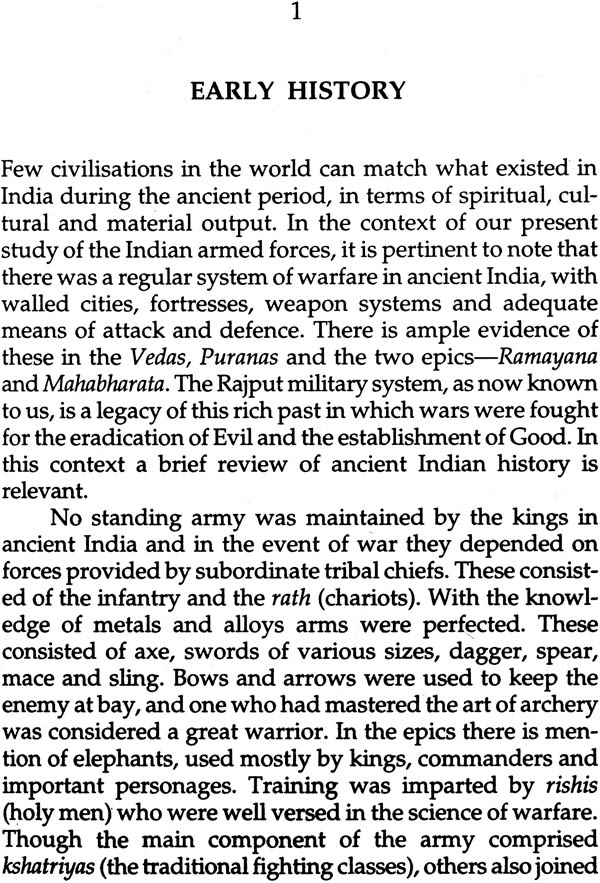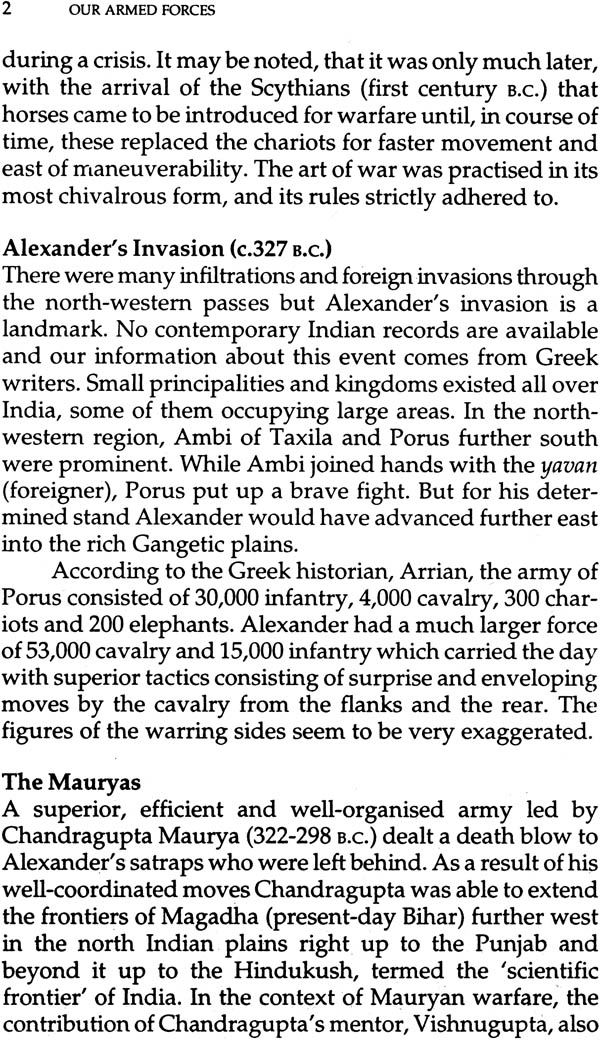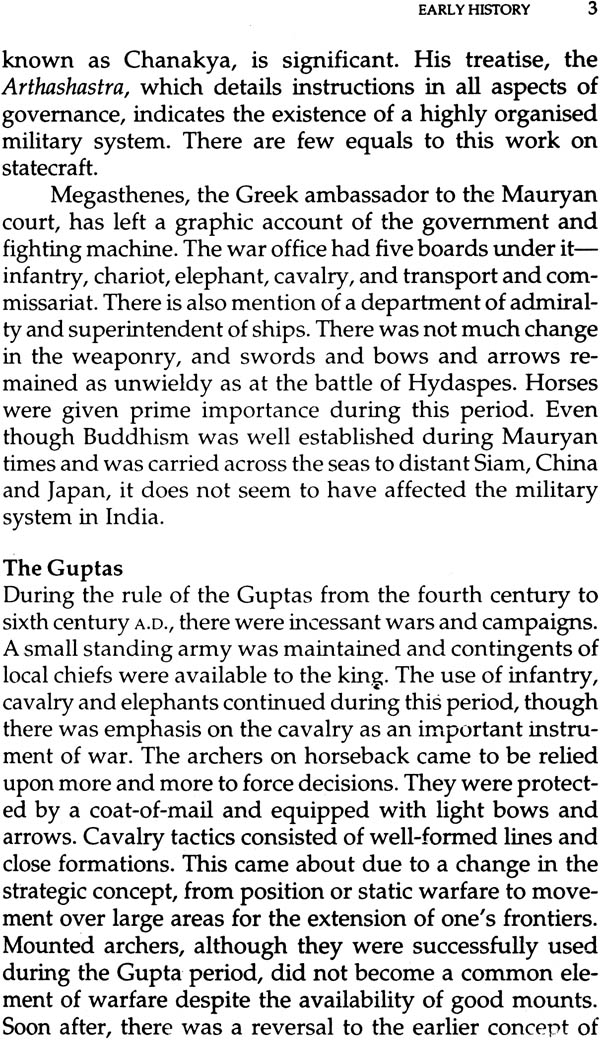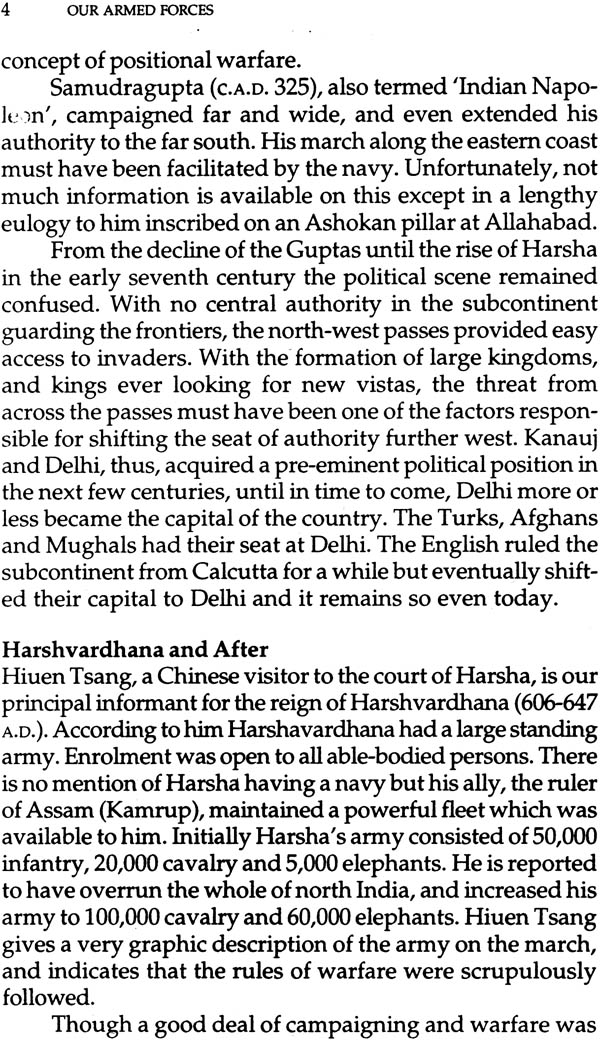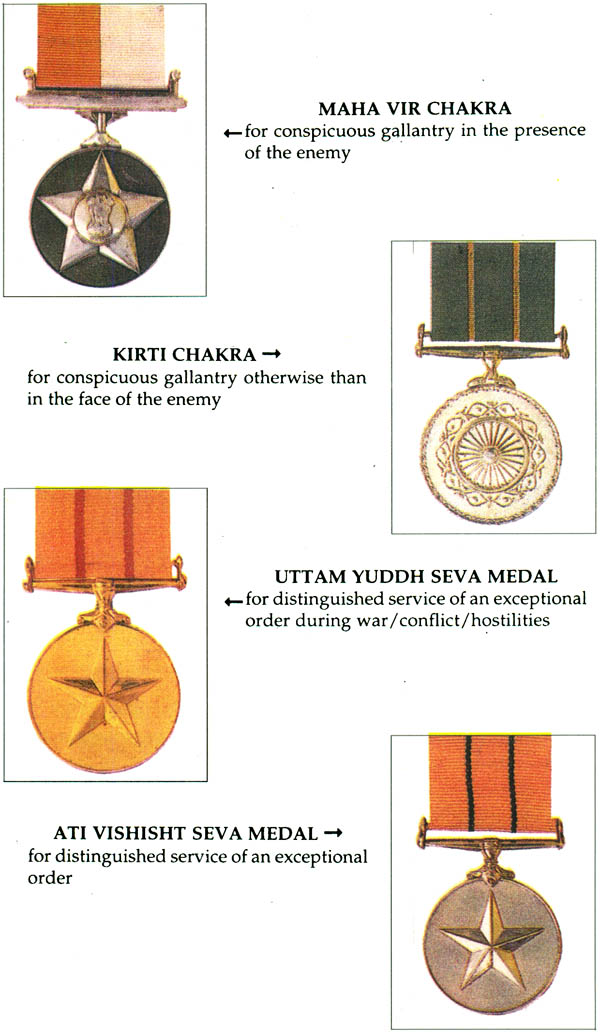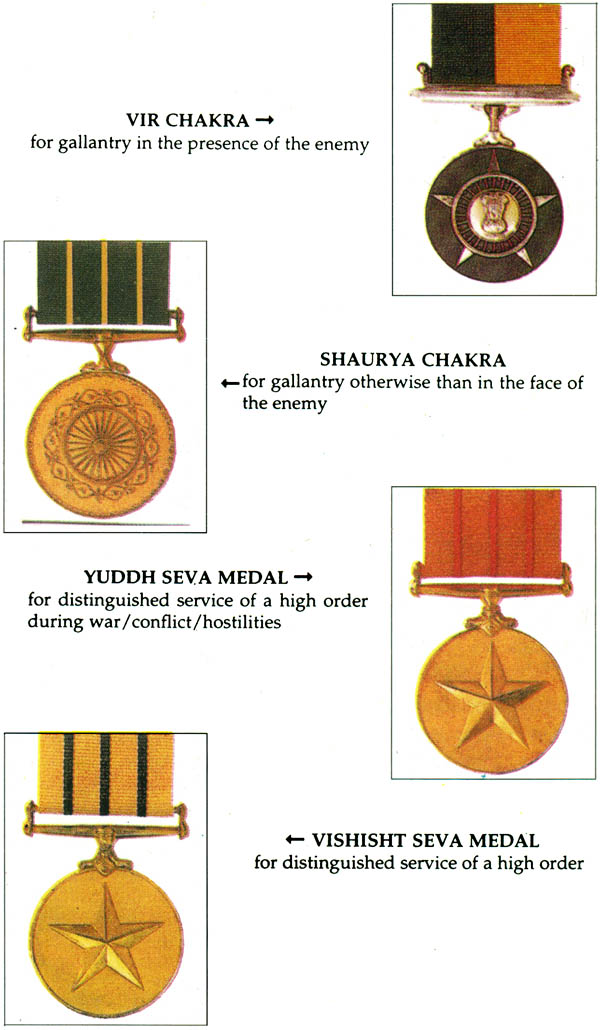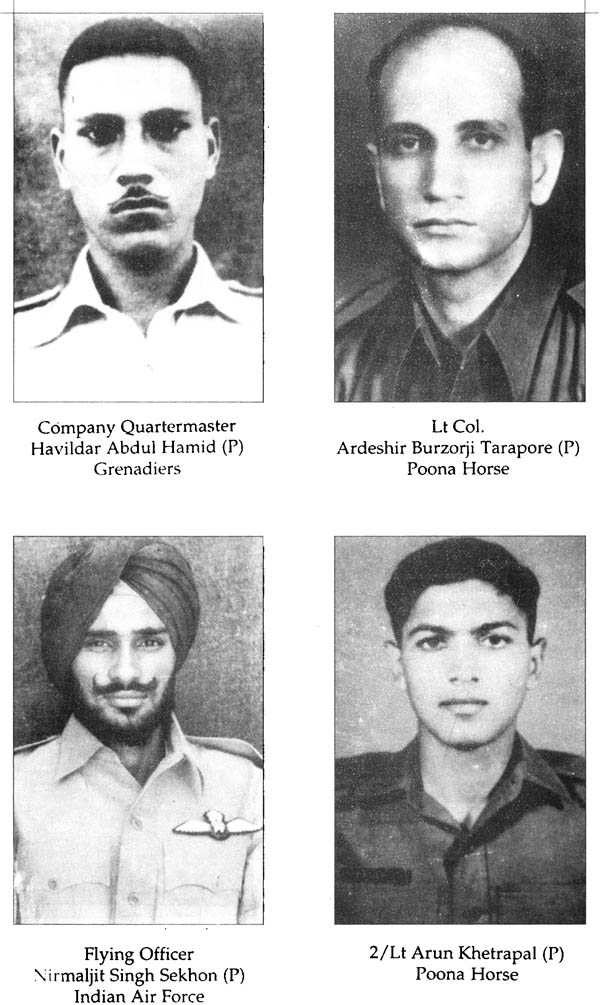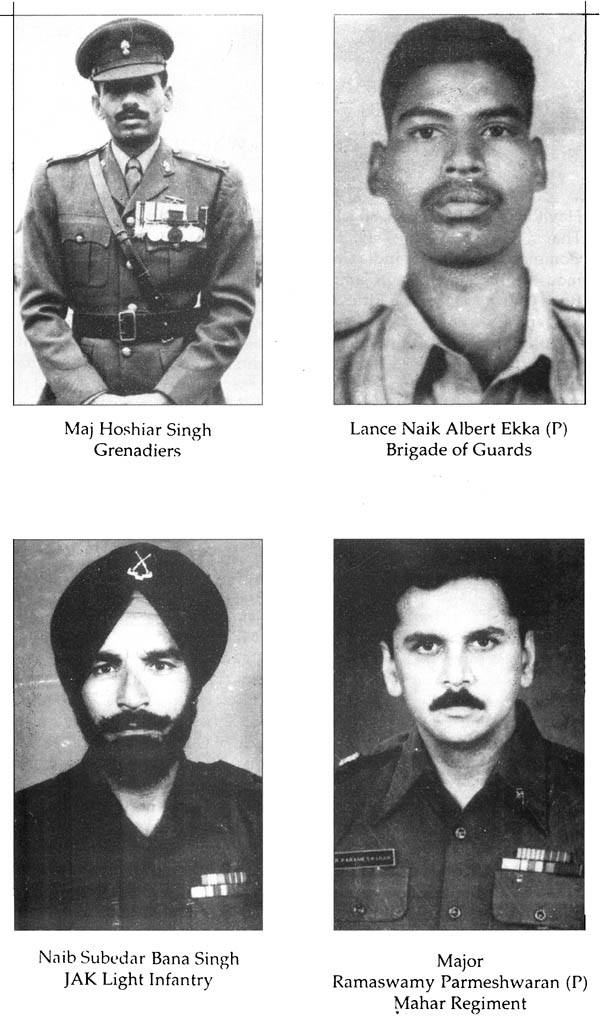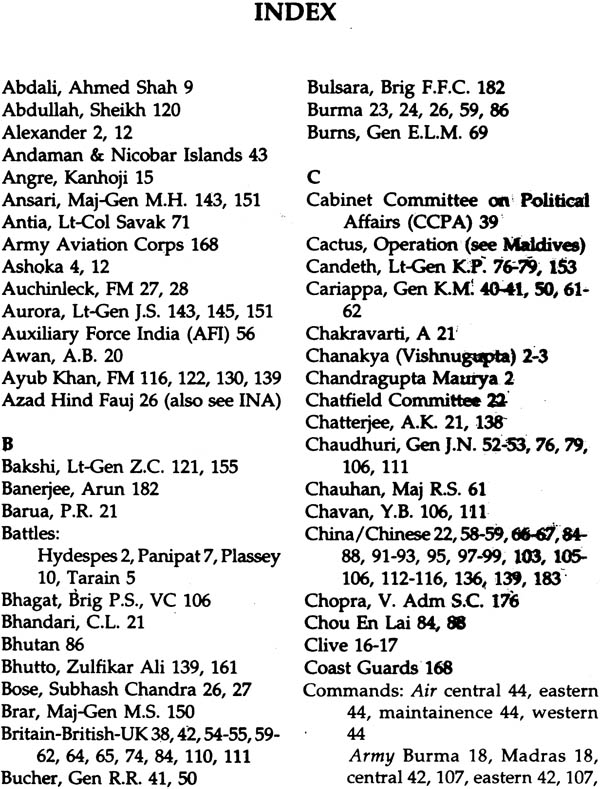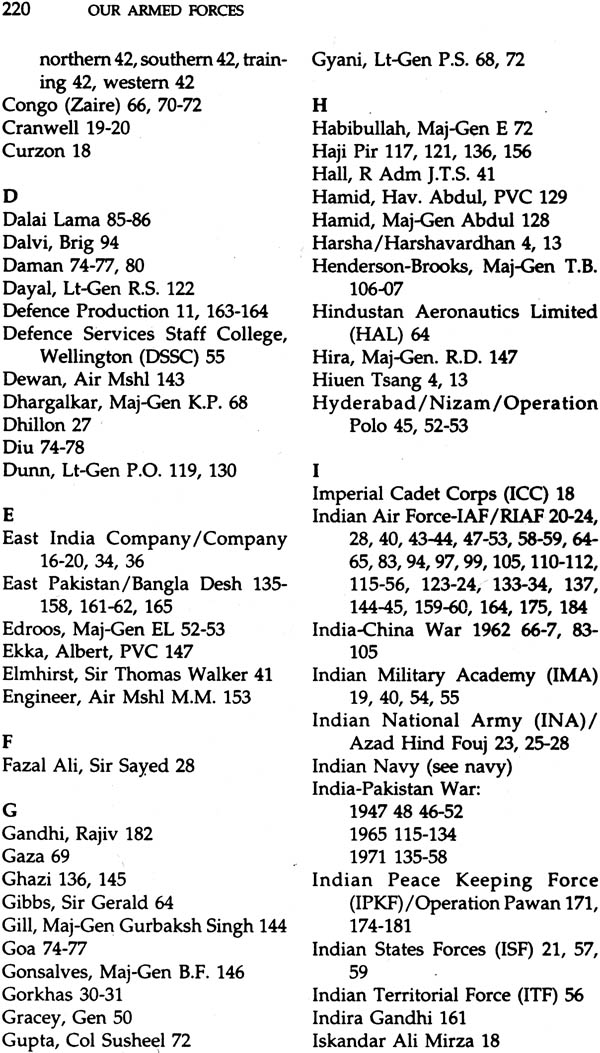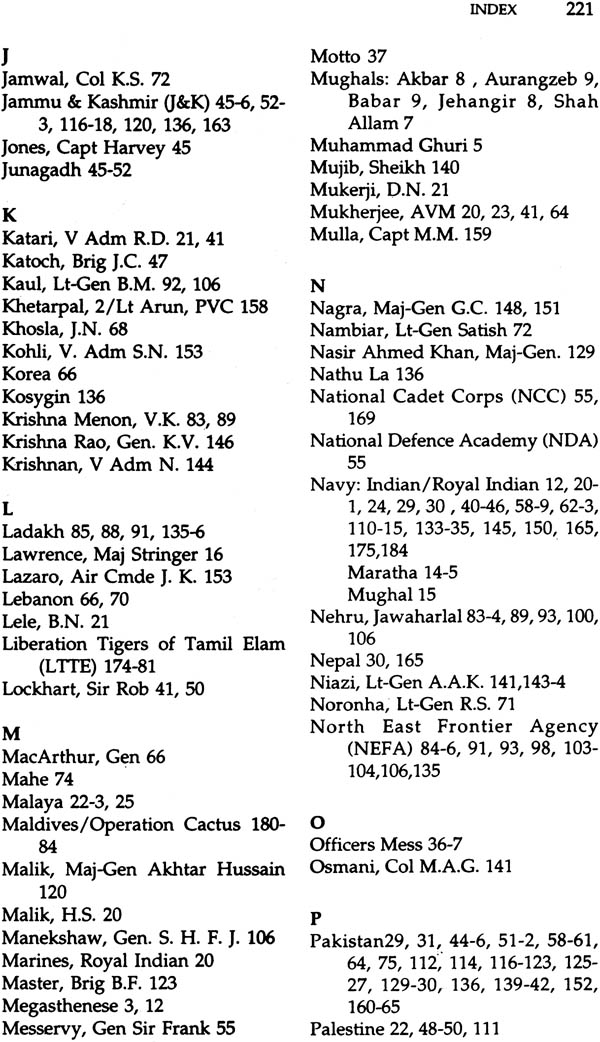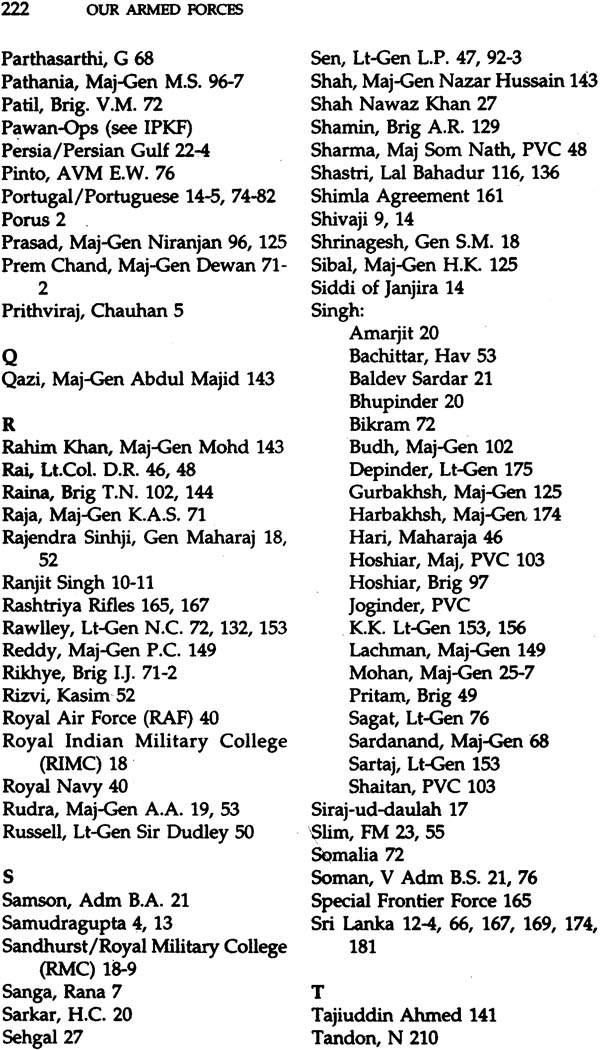
Our Armed Forces
Book Specification
| Item Code: | NAI225 |
| Author: | Lt. Col. Gautam Sharma |
| Publisher: | National Book Trust, India |
| Language: | English |
| Edition: | 2017 |
| ISBN: | 8123727852 |
| Pages: | 230 (67 B/W Illustrations and 15 Colors Illustrations) |
| Cover: | Paperback |
| Other Details | 8.5 Inch x 5.5 Inch |
| Weight | 350 gm |
Book Description
Armed forces of India are the fourth largest in the World. This book describes their contribution in safeguarding sovereignty and integrity of the world’s largest democracy. There are graphic descriptions of different operations, proxy wars and combat with insurgency. It is a comprehensive study of the past, present and future of Indian Armed Forces.
Lt. Col. (Retd) Gautam Sharma has been a Fellow of the Indian Council of Historical Research, radio and TV commentator on defense and international relations. He has been on the board of study and examiner in a number of Indian universities up to the PhD Level. He had joined the Indian army during World War II and served for some 30 years. He has published hundreds of articles on these subjects and has published some twelve books including regimental histories. His latest publication is—Nationalism of the Indian Army—1885-1947.
There are a large number of books on the Indian Army covering the last 200 years and some written by historians and Indian officers who have participated in the wars and campaigns since 1947. There area hardly any official accounts except for the 1947-48 war. This is the first attempt to include all the three services with an emphasis on the post-1947 period.
The British made full use of the potential available in the country and the Indian soldier came to be ranked among the best fighting man in the world. The Air force and Navy came in the early thirties and also opened their account during World War II, but only as appendages of their British counter parts. The very large number of Indians recruited during World War II gained valuable experience. When independence came these veterans formed the backbone of the armed forces in spite of the division of the forces between India and Pakistan, and India and UK. They distinguished themselves in the war which was forced upon us immediately after independence and the others during the next 25 years. The forces were build up with better weapons, and equipments and weapon systems, of which the 1971 war is a standing testimony.
Even though there have been no actual hostilities on our borders since then the security environment has been hardly peaceful. There have been proxy wars and insurgency on a large scale which have been squarely met. Build-up has continued and we now have the fourth largest armed force in the world. Indigenization has gone ahead with rapid progress in industrialization. India is now able to produce warships, aircrafts of various types which have given a good account of themselves, different types of missiles, tanks, artillery guns and their ammunition and thousands of other essential items of military hardware.
As a truly national armed force it has identified itself with the national aspirations and has come forward during natural calamities and to fight insurgency which raised its head on a large scale in Jammu & Kashmir, Punjab and the north east. It has gone abroad to help neighbors in their hour of need on request, to Sri Lanka and Maldives as also on United Nations Peace Keeping Missions to various parts of the world. There is a standing demand for them. All these have been included in this brief account.
I am deeply indebted to large number of friends and well wishers, too many to be named, who have helped me in the preparation of this work. I am also indebted to Lt.-Gen. (Retd) S.L. Menezes for his advice and valuable suggestions.
I am fully responsible for the facts and their presentation.
| Introduction | vii |
| 1. Early History | 1 |
| 2. The British Period | 16 |
| 3. The Coming of Independence | 38 |
| 4. Consolidation and Build-up | 59 |
| 5. UN Missions | 66 |
| 6. Take-over of Portuguese Enclaves | 74 |
| 7. Heading for Confrontation | 83 |
| 8. The Cloud Burst | 91 |
| 9. Aftermath of the Trauma | 105 |
| 10. Pakistan's Thrust Blunted | 115 |
| 11. A Decisive Victory | 135 |
| 12. Post-war Scenario | 161 |
| 13. More Peace-keeping | 174 |
| Appendices | |
| 1. Division of the Armed Forces between India and Pakistan, 1947 | 185 |
| 2. Infantry Regiments | 187 |
| 3 . Cavalry/Armored Regiments | 189 |
| 4 . Organisation --Ministry of Defense | 192 |
| 5. Organisation --Army Headquarters | 193 |
| 6. Chiefs --Indian Army | 194 |
| 7. Organisation --Naval Headquarters | 196 |
| 8. Chiefs --Indian Navy | 197 |
| 9. Organisation --Air Headquarters | 198 |
| 10. Chiefs --Indian Air Force | 199 |
| 11. Ranks --Army, Navy and Air Force | 201 |
| 12. Medals and Decorations | 203 |
| 13. Battle Honours | 205 |
| 14. Military Terms | 206 |
| 15. Abbreviations | 212 |
| Bibliography | 216 |
| Index | 219 |
